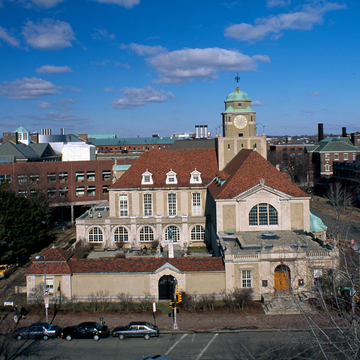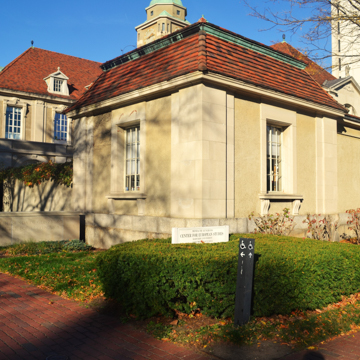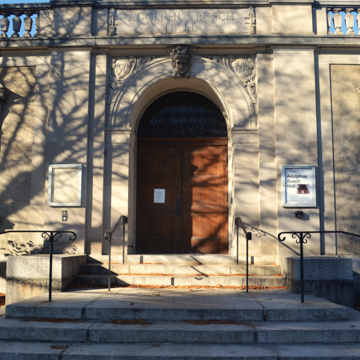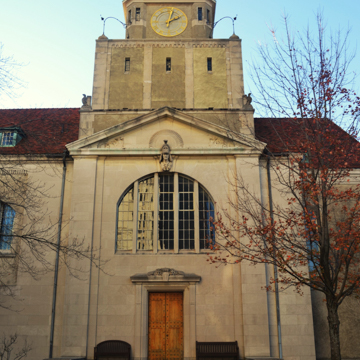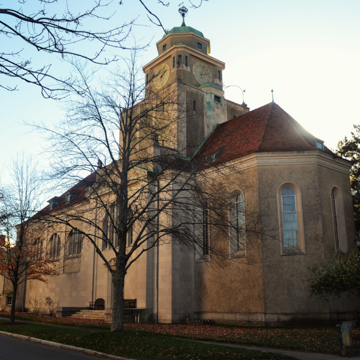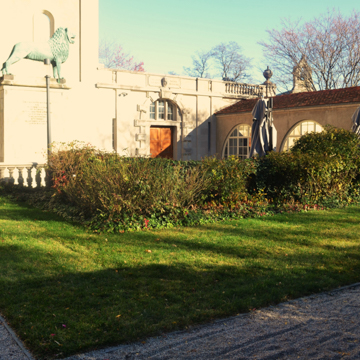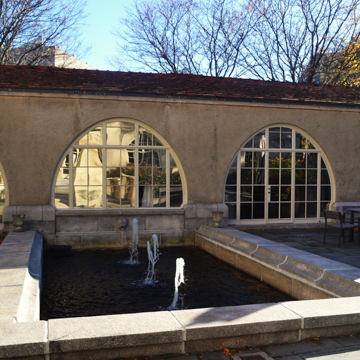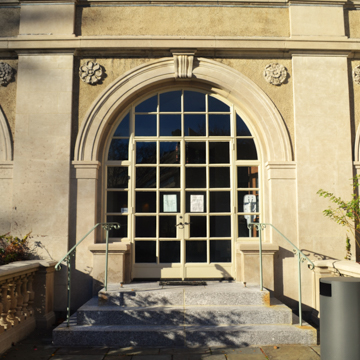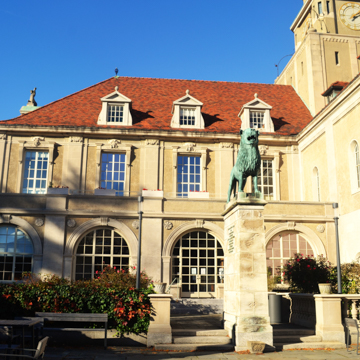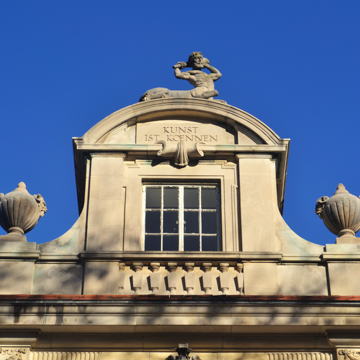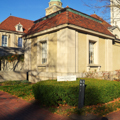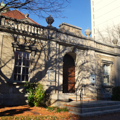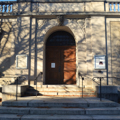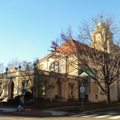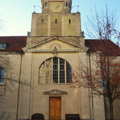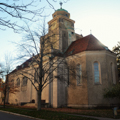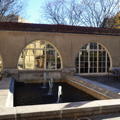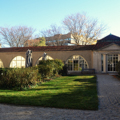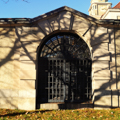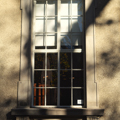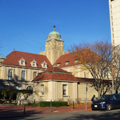You are here
Adolphus Busch Hall, Minda de Gunzburg Center for European Studies
Teaching museums captured the interest of Harvard's leaders and donors at the turn of the twentieth century, the Germanic Museum, located in Adolphus Busch Hall, being an excellent example. Kuno Francke, a Harvard German professor, conceived the idea of a museum that would celebrate the art of Germanic peoples, following the precedent of the nearby Semitic Museum (NY18; 1900–1902). Harvard invited the Munich-based architect to design a conspicuously Germanic building, its L-shaped plan sheltering a walled garden. Bestelmeyer chose stuccoed walls, a high tiled and hipped roof, Baroque-ornamented windows and dormers, and a multistaged copper-domed tower at the corner. H. Langford Warren, dean of Harvard's School of Architecture, prepared the construction drawings and supervised construction. The president of the Society of Arts and Crafts from 1903 to 1917, Warren incorporated leading American craftsmen in the project: tile maker Henry Chapman Mercer, ironworker Frank Koralewsky, and sculptors John Kirchmayer and Roger Noble Burnham. An important feature of the Germanic Museum was a collection of plaster casts, which remain in Busch Hall to this day. In 1990, the Minda de Gunzburg Center for European Studies acquired this building and the Busch-Reisinger Collection moved to Werner Otto Hall, an addition to the rear of the Fogg Art Museum (HY15). Werner Otto Hall will be demolished as part of the renovation and expansion at the Fogg Museum planned by Renzo Piano in 2008–2013.
Writing Credits
If SAH Archipedia has been useful to you, please consider supporting it.
SAH Archipedia tells the story of the United States through its buildings, landscapes, and cities. This freely available resource empowers the public with authoritative knowledge that deepens their understanding and appreciation of the built environment. But the Society of Architectural Historians, which created SAH Archipedia with University of Virginia Press, needs your support to maintain the high-caliber research, writing, photography, cartography, editing, design, and programming that make SAH Archipedia a trusted online resource available to all who value the history of place, heritage tourism, and learning.















